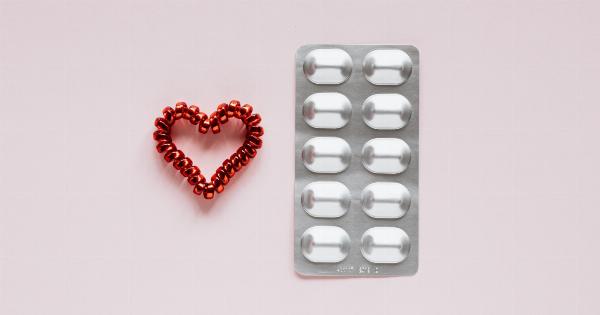Heart irregularities, also called arrhythmias, refer to any abnormal rhythms of the heart. This abnormality can be caused by various factors such as heart disease, high blood pressure, diabetes, stress, drug abuse, and others.
Arrhythmias can be of different types and may range from harmless palpitations to life-threatening conditions such as sudden cardiac arrest. However, with advancements in medical technology and research, a cure for heart irregularities is now available.
What are the Different Types of Arrhythmias?
Arrhythmias can occur in different ways and the type of arrhythmia is determined by the part of the heart which is affected.
Sinus Arrhythmia
Sinus arrhythmia is a type of arrhythmia where the heart beats irregularly because of a disruption in the normal functioning of the sinus node. It is a benign condition and is common in young adults.
Atrial Fibrillation
Atrial fibrillation is a type of arrhythmia where the heart’s upper chambers beat erratically and rapidly. This can cause a disruption in blood flow, which can lead to blood clots and stroke.
This condition is usually seen in people with heart disease, high blood pressure, or thyroid disorders.
Bradyarrhythmias
Bradyarrhythmias are a type of arrhythmia that affects the heart’s rhythm and rate. This can cause the heart rate to fall below 60 beats per minute.
This condition is common in elderly people, and those with heart disease or heart damage from a heart attack.
Diagnostic Procedures for Arrhythmias
Diagnosing arrhythmias requires a thorough examination by a cardiologist. Several diagnostic procedures may be carried out to identify arrhythmias. These include:.
Electrocardiogram (ECG)
An electrocardiogram is a diagnostic test that records the electrical activity of the heart. A patient will be required to lie down while electrodes are placed on the chest, arms, and legs.
This test can help identify abnormal heart rhythms and detect the type of arrhythmia.
Event Monitors
An event monitor is a device that can be worn to monitor the heart’s rhythm over a period of time. The device is usually worn for a few weeks to a month, and it records the heart’s electrical activity.
Patients are required to push a button on the device when they feel symptoms of an arrhythmia.
Electrophysiology (EP) Study
An electrophysiology study is a diagnostic test that involves the insertion of catheters into the heart to record the electrical signals and map the heart’s rhythm.
This test is carried out to diagnose the type of arrhythmia and determine its cause and location.
Treatment Options for Arrhythmias
The treatment of arrhythmias depends on the type and severity of the arrhythmia, and the cause of the arrhythmia. Treatment options may include:.
Medications
Medications such as beta-blockers, calcium channel blockers, and anti-arrhythmic drugs can be prescribed to help control the heart’s rhythm.
These medications help slow down the heart rate or increase the heart rate, depending on the type of arrhythmia.
Cardioversion
Cardioversion is a procedure where a patient is given a controlled electric shock to reset the heart’s rhythm. This procedure is generally used for patients with atrial fibrillation.
Ablation
Ablation is a minimally invasive procedure that involves the insertion of a catheter into the heart. The catheter is used to deliver heat or cold energy to the area of the heart that is causing the arrhythmia.
This destroys the cells responsible for the arrhythmia and prevents it from reoccurring.
Pacemaker
A pacemaker is a small device that is implanted under the skin of the chest. It delivers electrical signals to the heart to help maintain a normal rhythm. An implanted pacemaker is often the treatment of choice for patients with bradyarrhythmias.
ICD (Implantable Cardioverter Defibrillator)
An ICD is a device that is similar to a pacemaker but can also detect and treat life-threatening arrhythmias. It is usually implanted in patients who are at risk of sudden cardiac arrest.
Preventative Measures for Arrhythmias
Arrhythmias can be prevented by following certain measures:.
Eating a Healthy Diet
A healthy diet can reduce the risk of heart disease and arrhythmias. A diet rich in fruits, vegetables, and whole grains are recommended.
Exercising Regularly
Regular exercise can help maintain a healthy heart and reduce the risk of arrhythmias. At least 30 minutes of moderate exercise daily is recommended for a healthy heart.
Reducing Stress
Stress can cause arrhythmias and increase the risk of heart disease. Practicing relaxation techniques such as yoga or meditation can help reduce stress levels.
Quitting Smoking
Smoking is a leading cause of heart disease and can cause arrhythmias. Quitting smoking can significantly reduce the risk of heart disease and arrhythmias.
Conclusion
Arrhythmias can range from harmless palpitations to life-threatening conditions such as sudden cardiac arrest.
The type of arrhythmia determines the treatment options that can range from medications and cardioversion to ablation and implanted devices such as pacemakers and ICDs. Preventative measures such as a healthy diet, regular exercise, stress reduction, and quitting smoking can help reduce the risk of arrhythmias and heart disease.
Recognizing the symptoms of arrhythmias and seeking medical attention can help diagnose the condition and provide timely treatment.

























